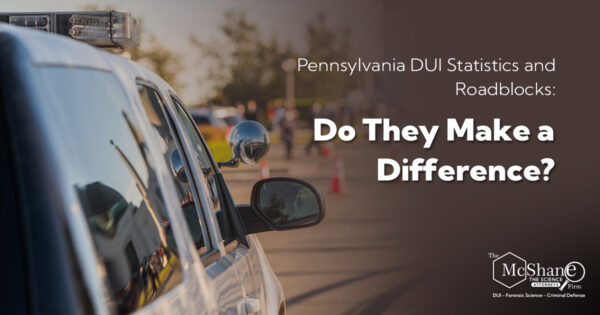Introduction:
Driving under the influence (DUI) is a major public safety concern across the United States, and Pennsylvania is no exception. Law enforcement agencies in the state have implemented various measures to combat DUIs, including the use of DUI roadblocks or sobriety checkpoints. In this blog post, we will explore Pennsylvania DUI statistics and examine the efficiency of DUI roadblocks in catching impaired drivers. We will also compare the prevalence of DUI at nighttime, as found in the National Highway Traffic Safety Administration (NHTSA) roadside surveys, to the prevalence of DUI at these roadblocks.

Pennsylvania DUI Statistics:
DUI-related incidents are a significant issue in Pennsylvania. According to the Pennsylvania Department of Transportation, in 2020:
- There were 9,244 alcohol-related crashes, which resulted in 267 fatalities.
- Alcohol-related crashes accounted for 23% of all traffic fatalities in the state.
- The highest number of alcohol-related crashes occurred during the holiday season, particularly between Thanksgiving and New Year’s Day.
DUI Roadblocks and Their Efficiency:
DUI roadblocks, also known as sobriety checkpoints, are a common strategy used by law enforcement agencies to identify and apprehend impaired drivers. These roadblocks involve stopping vehicles at predetermined locations and checking drivers for signs of impairment.
According to a study by the NHTSA, DUI checkpoints have been effective in reducing alcohol-related crashes by up to 20%. However, the efficiency of these roadblocks in catching DUI drivers can vary based on several factors, such as:
- The frequency and visibility of the checkpoints
- The number of officers present at the checkpoints
- The level of public awareness and education regarding the dangers of impaired driving
Nighttime Prevalence of DUI vs. Prevalence at Roadblocks:
The NHTSA conducts periodic roadside surveys to gauge the prevalence of impaired driving. These surveys have consistently shown that the prevalence of DUI is significantly higher during nighttime hours. According to a 2013-2014 NHTSA survey:
- The overall prevalence of drivers with a blood alcohol content (BAC) of 0.08% or higher was 1.5%.
- The prevalence of drivers with a BAC of 0.08% or higher during nighttime hours (10 p.m. to 3 a.m.) was 8.3%.
When comparing these statistics to the prevalence of DUI at roadblocks, the results may seem less impressive. For example, a study published in the American Journal of Preventive Medicine found that only 1 out of every 161 drivers stopped at a sobriety checkpoint was arrested for DUI. This discrepancy raises questions about the overall efficiency of DUI roadblocks in catching impaired drivers compared to the prevalence of DUI during nighttime hours.
Conclusion:
DUI roadblocks do not catch as many impaired drivers as nighttime roadside surveys suggest exist. Is the rationale and the justification of these intrusions still hold legal weight?